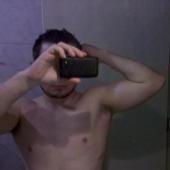Esteroides X Drogas
-
Quem Está Navegando 0 membros estão online
- Nenhum usuário registrado visualizando esta página.
-
Conteúdo Similar
-
- 50 respostas
- 735 visualizações
-
- 19 respostas
- 871 visualizações
-
- 13 respostas
- 591 visualizações
-
- 6 respostas
- 605 visualizações
-
- 0 respostas
- 177 visualizações
-






Posts Recomendados
Crie uma conta ou entre para comentar
Você precisar ser um membro para fazer um comentário
Criar uma conta
Crie uma nova conta em nossa comunidade. É fácil!
Crie uma nova contaEntrar
Já tem uma conta? Faça o login.
Entrar Agora